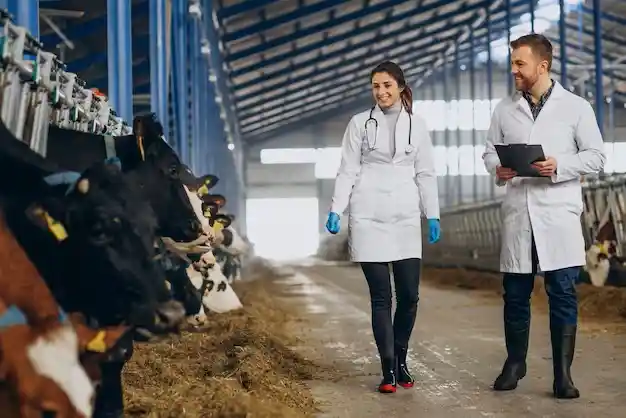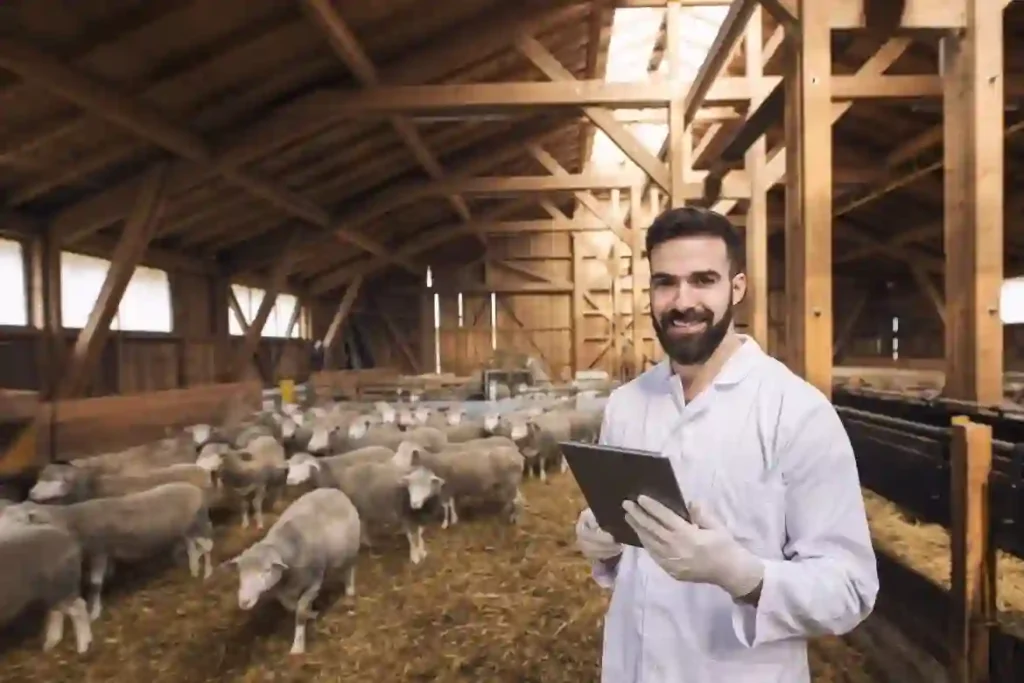Local SEO Strategies for Medicine, Poultry, and Dairy Businesses in Agriculture
In the ever-expansive realm of agriculture, businesses focusing on medicine, poultry, and dairy are vital components of our food and healthcare systems. To thrive in this highly competitive landscape, a strong online presence is not just beneficial; it’s essential. Local SEO, the art of enhancing online visibility at the local level, holds the key to achieving that success. This guide delves into the crucial strategies tailored for agriculture-related enterprises. From understanding the nuances of local SEO to crafting effective content and optimizing Google My Business profiles, we explore how medicine, poultry, and dairy businesses can sow the seeds of digital growth in the fertile grounds of the internet.
Table of Contents

Understanding Local SEO
Understanding Local SEO is the cornerstone of success for agriculture businesses operating in the digital age. Local SEO, or Search Engine Optimization, is a specialized approach to enhance online visibility at the local level. It focuses on optimizing a business’s digital presence to ensure it appears prominently in local search results, be it in web searches, map listings, or directory services.
For agriculture businesses, particularly those dealing with medicine, poultry, and dairy, local SEO is a game-changer. It matters profoundly because it connects these vital industries with the local community they serve. When someone is searching for medicines, fresh poultry, or dairy products, they often rely on search engines like Google to find the nearest and most reliable sources.

Local SEO ensures that these businesses appear at the top of search results, making them easily accessible to potential customers. It is not just about visibility; it’s about building trust and credibility in the local market. By optimizing their online presence, agriculture businesses can attract more foot traffic to their physical locations and increase their online sales, ultimately contributing to their growth and success.

Keyword Research and Analysis
Choosing the right local keywords is a critical component of successful local SEO strategies for agriculture businesses like those dealing with medicine, poultry, and dairy. The significance of these carefully selected keywords cannot be overstated. They serve as the bridges connecting potential customers to your products or services.
Local keywords, often including location-specific terms, help search engines understand the relevance of your business to users in a particular area. For instance, if you’re a dairy farm in Dhaka, Bangladesh, including keywords like “Dhaka dairy farm” or “fresh milk in Dhaka” signals to search engines that you’re the go-to source for dairy products in that region.
Effective keyword research is a skill that demands a blend of creativity and data analysis. It’s about understanding the language your potential customers use and matching their search intent. For medicine, poultry, and dairy businesses, it’s vital to consider not only the product names but also related terms and phrases that consumers might use in their queries.
Here are some tips for effective keyword research:
- Local Keyword Variations: Identify local keywords specific to your area of operation.
- Competitor Analysis: Analyze what keywords competitors are targeting.
- Long-Tail Keywords: Target specific, longer phrases that reflect user intent.
- Keyword Tools: Utilize keyword research tools for data-driven insights.
- User-Focused Content: Create content around your chosen keywords to address customer needs.
By mastering the art of keyword research and analysis, agriculture businesses can improve their local search rankings and attract the right audience effectively.
On-Page SEO for Agriculture Businesses

On-Page SEO is the foundation of a strong digital presence for agriculture businesses, and it revolves around optimizing elements directly on your website to improve search engine visibility. To excel in the highly competitive sectors of medicine, poultry, and dairy, understanding on-page optimization is crucial.
First and foremost, titles, meta descriptions, and header tags play a pivotal role in on-page SEO. Titles should be descriptive, containing relevant keywords while providing a clear idea of the content. Meta descriptions should be engaging and informative, encouraging users to click through. Header tags (H1, H2, H3, etc.) organize your content and make it more readable while indicating the hierarchy of information.
For medicine businesses, on-page optimization involves creating content that addresses specific health concerns and provides solutions. Titles should focus on ailments, and meta descriptions should emphasize expertise. Header tags help structure content for easy navigation.
Poultry businesses can benefit from on-page optimization by using titles and meta descriptions that highlight the quality of poultry products. Header tags can be employed to organize content about various poultry breeds, care, and preparation.
In the dairy sector, titles can emphasize the nutritional benefits of dairy products, while meta descriptions can highlight the farm’s commitment to quality. Header tags are useful for categorizing content on milk, cheese, and yogurt.
Optimizing on-page elements aligns your content with user intent, making it more attractive to search engines and users alike.

Google My Business (GMB) Optimization
Google My Business (GMB) Optimization is a game-changer for agriculture businesses, and its importance cannot be overstated. A well-optimized GMB profile is your digital storefront, acting as the first point of contact between potential customers and your business. It’s the modern equivalent of having a prominent physical location, as it plays a key role in local SEO.
An optimized GMB profile ensures that essential business information such as your address, phone number, hours of operation, and product or service details are accurate and up-to-date. It also enables you to share high-quality images, respond to customer reviews, and engage with your audience. All of this enhances your credibility, trustworthiness, and visibility in local search results.
Here’s a step-by-step guide to setting up and optimizing GMB profiles for agriculture businesses:
Claim Your Listing: Start by claiming your business on Google My Business if you haven’t already. Ensure that the business information you provide is accurate and matches your website.
Verify Your Business: Google will typically send a postcard with a verification code to your business address. Use this code to verify your listing.
Complete the Profile: Fill out every section of your GMB profile comprehensively, including business name, category, description, and photos. High-quality images of your products, premises, and team can significantly impact user engagement.
Include Your Location: Specify your location accurately on the map, as it’s crucial for local searches.
Regular Updates: Keep your GMB profile updated with current business hours, special promotions, and news updates.
Respond to Reviews: Engage with customer reviews by responding politely and professionally, whether the feedback is positive or negative.
Utilize GMB Posts: Use GMB posts to share updates, events, and promotions. This keeps your profile fresh and informative.
By optimizing your GMB profile, you not only provide a better user experience for potential customers but also boost your chances of appearing in the coveted local 3-pack, which is essential for agriculture businesses looking to grow their local customer base.
Get a Free One-on-One Consultations
+8801997310000
Local Link Building Strategies
On-page SEO is the art of optimizing the content and elements within your bakery’s website to make it more appealing to search engines like Google. For bakeries aiming to sweeten their online visibility, on-page SEO is a vital ingredient in the recipe for success.
Keyword Optimization: Incorporate local keywords naturally into your website’s content. These keywords should reflect your bakery’s specialties, products, and location. Think phrases like “artisanal bread in [Your City]” or “wedding cakes near me.”
Title Tags and Meta Descriptions: Optimize your title tags and meta descriptions with relevant keywords. These elements provide search engines and users with a preview of your page’s content and can significantly impact click-through rates.

Header Tags: Use header tags (H1, H2, H3) to structure your content effectively. This not only improves readability but also helps search engines understand the hierarchy of information on your pages.
Image Alt Text: Add descriptive alt text to your bakery’s images. This not only assists visually impaired users but also provides search engines with context about your visuals.
Internal Linking: Strategically link to other relevant pages within your website. For example, link from a product page to a blog post about the same product. Internal links help improve navigation and spread SEO authority.
Mobile Optimization: Ensure your bakery’s website is responsive and mobile-friendly. Google prioritizes mobile-friendly sites in search results, given the prevalence of mobile searches.
Page Load Speed: Optimize your website’s speed by compressing images and minimizing unnecessary scripts. Faster loading times improve the user experience and can positively impact rankings.
Quality Content: Craft high-quality, informative content that resonates with your target audience. Showcase your bakery’s expertise and unique offerings through blog posts, product descriptions, and more.
Local Information: Include your bakery’s name, address, and phone number (NAP) on every page, preferably in the footer. Consistency is crucial, as it helps search engines verify your bakery’s location.
Schema Markup: Implement schema markup for bakeries, such as “Bakery” and “BakeryOffer.” This structured data can lead to rich snippets in search results, increasing visibility.
On-page SEO is an ongoing effort. Regularly update and expand your content, monitor keyword performance, and adapt to changing search engine algorithms. By optimizing your bakery’s website effectively, you can ensure that your digital storefront is a welcoming and enticing destination for both search engines and hungry local customers.
Content Creation for Agriculture SEO

Creating valuable, location-specific content is at the core of successful Agriculture SEO. In an era where consumers seek information online, having content tailored to your area of operation is essential for businesses in medicine, poultry, and dairy. It not only informs and engages your audience but also enhances your local SEO efforts by demonstrating relevance and expertise.
For medicine businesses, content that addresses common health concerns, offers guidance on medical products, and includes local healthcare tips is invaluable. Blog posts on topics like “Managing Common Ailments in Dhaka” or “The Importance of Local Pharmacies” can be informative and location-specific.
In the poultry sector, content may revolve around poultry care, different breeds, and local poultry events or fairs. Articles like “Raising Healthy Chickens in [Your Location]” or “Local Poultry Shows Near [Your Location]” can cater to local enthusiasts.
In the dairy industry, focus on creating content about the benefits of dairy products, local dairy farm stories, and even dairy-based recipes using local ingredients. Content ideas like “The Nutritional Value of Local Dairy Products” or “Dairy Farm Spotlight: [Your Location]” add local relevance and value.
Best practices for creating location-specific content include conducting thorough keyword research to identify locally relevant terms, using local SEO techniques, and incorporating location-specific information and references throughout the content. By producing content that is both informative and locally focused, agriculture businesses can strengthen their online presence and connect more effectively with their target audience.
Mobile Optimization
Mobile optimization is no longer an option—it’s a necessity for agriculture businesses striving for success in local SEO. With a growing number of consumers relying on smartphones and tablets to access information and make purchasing decisions, the significance of mobile-friendly websites cannot be overstated.
In the context of local SEO, mobile optimization is critical because search engines like Google prioritize mobile-friendly websites in their rankings. A mobile-friendly website not only improves user experience but also positively impacts your search engine visibility. For agriculture businesses specializing in medicine, poultry, and dairy, this is particularly vital, as local consumers often use mobile devices to search for healthcare services and local produce.

Here are some tips for optimizing websites for mobile users:
Responsive Design: Ensure your website uses a responsive design that adapts to various screen sizes. This makes your site look and function well on mobile devices.
Mobile-Friendly Content: Keep your content concise and easy to read on smaller screens. Use shorter paragraphs and larger fonts for better readability.
Quick Loading Speed: Optimize your website for fast loading times, as mobile users are often looking for quick answers. Compress images and minimize unnecessary scripts.
Easy Navigation: Simplify your site’s navigation for mobile users. Clear and intuitive menus, buttons, and calls to action are essential.
Optimize for Local Searches: Ensure your website is optimized for local keywords, and provide your location and contact information prominently on your mobile site.
Testing: Regularly test your website on different mobile devices to identify and address any issues that may arise.
By making your website mobile-friendly, you improve the user experience and increase the likelihood that mobile visitors will engage with your content and contact your business. This, in turn, boosts your local SEO efforts and enhances your digital presence in medicine, poultry, and dairy markets.

Social Media and Online Reputation Management
Social media has evolved into a powerful tool in the realm of local SEO for agriculture businesses, impacting the way they engage with their local audience and build online credibility. It’s no longer just a platform for sharing updates and connecting with customers; it plays a significant role in enhancing local search rankings.
The role of social media in local SEO is multifaceted. Firstly, it allows businesses to establish and maintain a strong online presence in the local community. Consistent, engaging, and location-specific posts can contribute to increased brand visibility. Secondly, social media platforms often act as search engines themselves, and optimizing profiles and posts for local keywords can boost your visibility in these in-platform searches. Finally, user engagement and reviews on social media are becoming increasingly important for local SEO, as they indicate your business’s popularity and relevance.
Online reputation management is closely tied to social media and local SEO. A positive online reputation can significantly affect local search rankings. Search engines, like Google, consider your online reputation, including ratings and reviews on platforms like Google My Business, Yelp, and social media channels, when determining your ranking in local search results. Positive feedback and active reputation management can help you stand out in the crowded digital landscape, attracting more local customers and improving your online visibility in medicine, poultry, and dairy markets.
Measuring Local SEO Success
Measuring the success of local SEO efforts is crucial for agriculture businesses specializing in medicine, poultry, and dairy. It provides valuable insights into the impact of your strategies and allows for adjustments and improvements over time. To effectively gauge the effectiveness of local SEO, you need to focus on key performance indicators (KPIs) tailored to your specific goals and audience.
Keyword Rankings: Tracking the positions of your target keywords in local search results helps determine how well your SEO efforts are performing. Tools like Google Search Console and third-party rank tracking software can assist in monitoring your keyword rankings.

Website Traffic: An increase in organic website traffic from local users is a strong indicator of SEO success. Google Analytics is an essential tool for tracking the sources of your website traffic.
Click-Through Rate (CTR): CTR measures the percentage of users who click on your search results when they see them. A higher CTR indicates that your listings are compelling to local searchers.
Conversion Rate: Tracking the conversion rate from your website’s organic traffic to actual customers can help you understand the ROI of your local SEO efforts.
Local Citations and Backlinks: Monitor the number and quality of local citations and backlinks to assess your website’s authority and relevance in local search results.
User Engagement: Evaluate metrics like time spent on page, bounce rate, and pages per session to understand how engaged local visitors are with your website.
Online Reviews: Keep an eye on the quantity and quality of online reviews, particularly on Google My Business and other review platforms, as this directly impacts local SEO.
Local Pack Inclusion: Track your inclusion in the local “3-pack” (top three local listings in search results) for relevant keywords.
By consistently monitoring these KPIs, you can assess the effectiveness of your local SEO strategies for agriculture businesses. The insights gained from these measurements will guide ongoing efforts to enhance your local online presence in medicine, poultry, and dairy markets.
Case Studies and Success Stories

Real-world case studies and success stories provide tangible evidence of the immense benefits that local SEO can bring to agriculture businesses. These stories showcase how local optimization can transform the fortunes of medicine, poultry, and dairy companies, increasing their online visibility, attracting more customers, and ultimately boosting profitability.
For instance, a local pharmacy in Dhaka, Bangladesh, implemented a robust local SEO strategy, including GMB optimization and location-specific content creation. Over time, their online presence improved, leading to a substantial increase in foot traffic and online sales.
In the poultry sector, a local farm in a rural area leveraged local SEO techniques to highlight their commitment to quality and animal welfare. Their local SEO efforts led to increased inquiries, farm visits, and the establishment of long-term customer relationships.
Dairy businesses have also reaped the rewards of local SEO by promoting the nutritional benefits of their products and emphasizing their ties to the local community. As a result, they’ve seen a significant rise in website traffic and sales.
These case studies emphasize that with the right local SEO strategies, agriculture businesses can flourish in their respective sectors, reaching and engaging with their local customer base more effectively.
FAQ
Local SEO is a specialized approach to improving online visibility for businesses within a specific geographic area. It is crucial for agriculture businesses because it connects them with local customers, enhances local online presence, and helps them stand out in the competitive medicine, poultry, and dairy sectors.
Selecting the right local keywords involves understanding your target audience’s search intent. You can conduct keyword research, utilize local SEO tools, and focus on location-specific terms related to your products or services in medicine, poultry, and dairy.
On-page SEO involves optimizing elements on your website. For medicine, poultry, and dairy businesses, it’s essential to optimize titles, meta descriptions, and header tags with relevant local keywords. Additionally, create high-quality content that caters to the needs of your local audience.
Optimizing your GMB profile includes providing accurate business information, adding high-quality images, and actively engaging with customer reviews. Completing all sections of your GMB profile and ensuring consistency with your website information is crucial.
Key performance indicators (KPIs) to monitor include keyword rankings, website traffic, click-through rate (CTR), conversion rate, local citations, backlinks, user engagement, online reviews, and local pack inclusion. These metrics help gauge the effectiveness of your local SEO strategies in medicine, poultry, and dairy sectors.

conclusion
Local SEO is an indispensable tool for agriculture businesses in medicine, poultry, and dairy. Optimizing websites, engaging with social media, and managing online reputation all play pivotal roles in boosting local online visibility. Valuable content, local keywords, and mobile optimization are key to attracting local customers. Tracking KPIs provides essential feedback. Through these strategies, agriculture businesses can grow their local online presence and connect with their communities effectively. For those in medicine, poultry, and dairy, now is the time to implement these strategies to enhance your local SEO, ensuring your business flourishes in the digital landscape and meets the needs of your local customers. Don’t wait; take action today to improve your local online presence.
